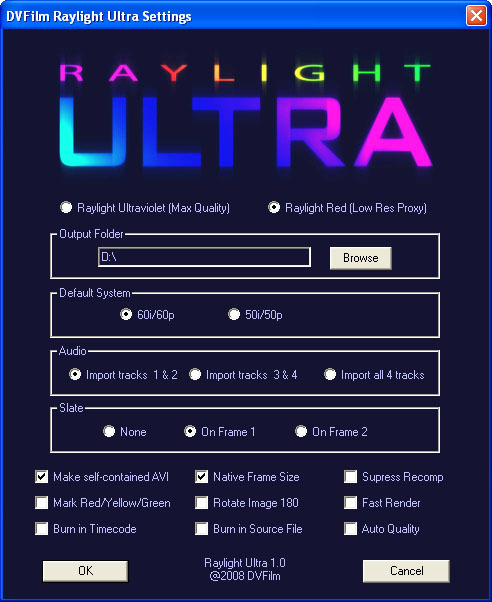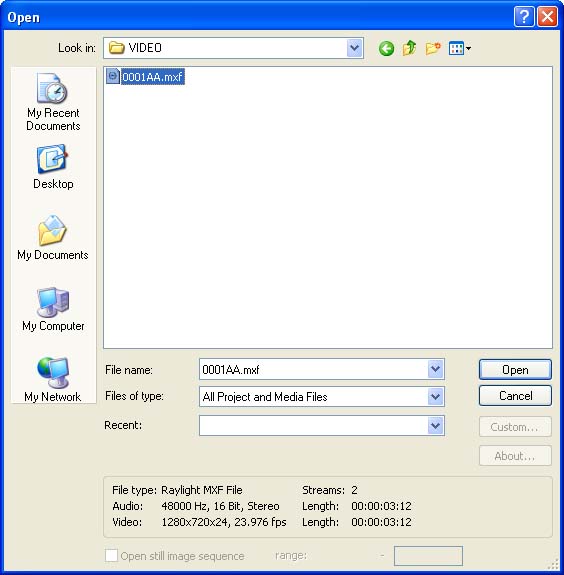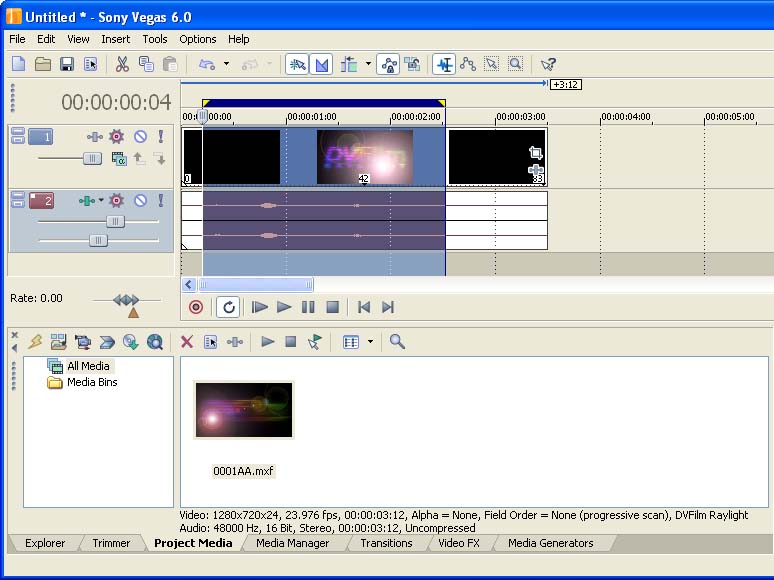1. Install and Configure Raylight Install Raylight if you have not already. When the installer runs it registers the Raylight Vegas plug-in. Then at this point you need to decide to use either square pixel HD format or the Native Frame Size HD format. The square pixel format (the default) is recommended for new users and has the best image quality. See the config screen below. Any of the Raylight options can be changed after editing has begun, however the Frame Size option only takes effect when the MXF files are imported into Vegas, or when Vegas is restarted. 2. Import MXF Files into Vegas Start Vegas, set the project settings as described here, and then use File->Open, or File->Import->Media or the Vegas Explorer to locate the MXF files and import them into Vegas. If the Raylight plugin is installed, when you click on an MXF file, the frame size, frame rate, and other information will be displayed as shown below: Raylight imports tracks 1 and 2 into a stereo track on the timeline. If you need access to tracks 3 and 4, use the "Import all 4 tracks" option in Raylight. The MXF files may also be dragged directly from the Explorer to the timeline, or from the Project Media window. Presently the plug-in works best with native frame rate formats like 720/24PN, 720/25PN, 720/30PN, 1080/30P and 1080i/25P. It can can also be used for 1080i60/24PA and 720/24P with 2:3 pulldown. It also works with DVCPRO50, DVCPRO or DV, both PAL and NTSC and with 2:3:3:2 (advanced) pulldown for NTSC. When the file is selected, its information is displayed as shown below. The quality of the preview window can be controlled by the preview window controls and by the Raylight Quality Control Panel. Use the Vegas "Preview Auto" mode with the preview window set to 1/2 or 1/4 actual size. A dual-processor system with fast disk drives is recommended for using the Raylight Vegas plug-in. 5. Exporting Video Exporting video (WM9, Uncompressed, MPEG2) from the timeline works the same as described here. Presently however you cannot export an MXF file or author a P2 Card directly from the timeline. If you want to preview your movie on the HVX200 camera, export a Raylight AVI and use P2 Maker.

The other options used by the MXF file plugin are

Also if the soundtrack MXF files are located in the adjacent AUDIO folder, or in the same folder, the soundtrack settings will also be displayed as shown at left.
3. Edit with MXF files on the Timeline

4. Playback from MXF Files